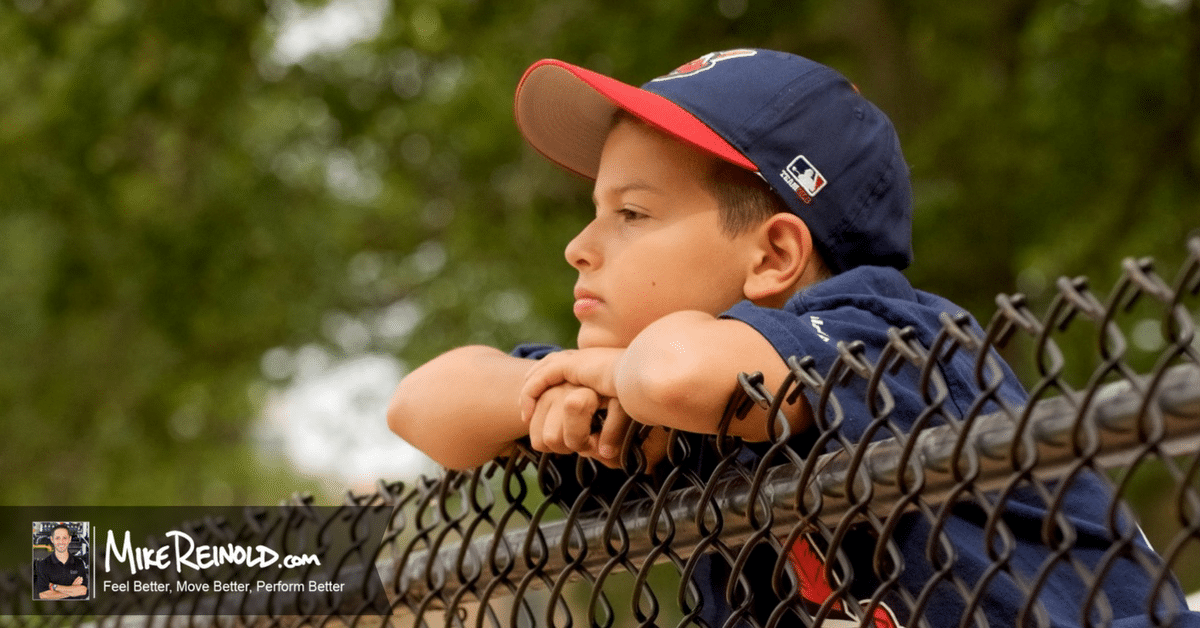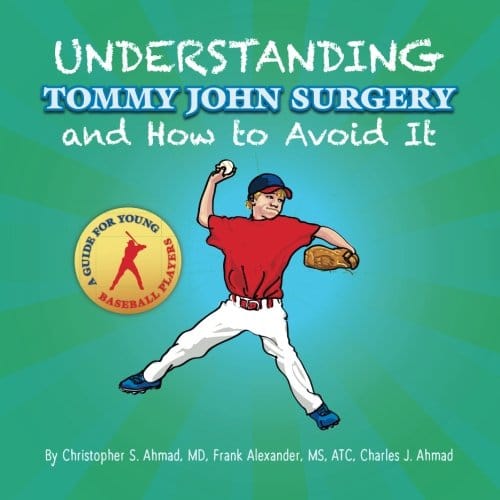Note from Mike: Today’s post is an excellent article from New York Yankees team physician, Dr. Chris Ahmad, and Frank Alexander, ATC. We know that Tommy John injuries continue to rise. Chris and Frank have written a new book to help educate your baseball players, parents, and coaches about Tommy John injuries, and more importantly, how to avoid them.
We have an epidemic on our hands in youth baseball. With nearly half a million participants, baseball is one of the most popular high school sports in the United States.1 Injuries to the throwing arm continue to grow every year and there is no slowing down in sight.
While there are a number of injuries that a baseball player can succumb to, the most well-known are Tommy John injuries, also known as ulnar collateral ligament (UCL) tears. Once considered a career ending injury, Dr. Frank Jobe revolutionized baseball and all of sports medicine in 1974. That summer, he performed the first UCL reconstruction on the most famous recipient – and namesake – of the surgery, Tommy John.
UCL injuries are the most studied condition in all of orthopedic surgery and its popularity in the media has made it a preeminent sports injury.
It is estimated that 1 in 4 Major League pitchers will need Tommy John Surgery in their career. In 2000, 13 MLB pitchers had UCL reconstructions. Over a decade later, in 2012, that number had increased nearly three-fold to 32 pitchers requiring the season ending surgery.2
Unfortunately, the increasing numbers of players falling victim to UCL injuries translate to the younger levels of baseball as well.
Evidence suggests the trend has impacted adolescent athletes with a 50% increase in UCL reconstructions in high school baseball players aged 15 to 19 years old.3 In New York State alone, the volume of UCL reconstructions increased by 193% over a 10-year period.3 These younger players may feel pressures within the competitive culture in youth baseball. This may lead players to play through pain and more talented players may be told they have to throw more frequently and with greater intensity.
While there are several reasons why there are so many Tommy John injuries, research has described overuse to be the main cause of player injury.
There is a 500% increase in risk for surgery for those players that pitch more than 8 months per year and a 400% increase in risk is observed for those that throw more than 80 pitches per game.3
Not only are younger athletes enduring this big-league problem, their understanding of the injury leads many of them to want the surgery even in the absence of injury. There are still many myths about Tommy John Surgery.
Many players see their idols in Major League Baseball have surgery and return to the field throwing harder. What the younger athletes don’t see is the painstakingly long hours that the pros put into their rehab. Mike Reinold recently had a podcast episode with several Tommy John patients to describe their experiences.
There is a common belief among players, parents, and coaches that the rehab program post-Tommy John was shorter than 1 year and allowed for a quick return to throwing.4 We are now seeing players at the higher levels of competition returning to sport around 14-16 months and the average at the Major League level is 15 months post-operatively.
The popularity of Tommy John Surgery in addition to the perceived glamor players receive upon their return is what leads the younger players to think surgery is necessary. Research from our office has shown that 51% of high school baseball players believe that they need Tommy John surgery in order to enhance their performance.4 This is in the absence of an injury – meaning, players that are healthy think they need surgery just to get better at the game of baseball.
Players should have surgery for UCL insufficiency (i.e. tear), not to improve their performance. While we want to celebrate the return of our favorite athletes to the playing field, we only hear about the successes and not much about the players that are unable to make it back. The success rates of Tommy John Surgery range between 80 – 90% and even though players make it back to the field, pitchers throw fewer innings post-operatively.2,4 Having surgery places an enormous burden on the player mentally, physically and emotionally.
As the numbers of youth athletics participants continues to rise, it may seem that elbow injuries have become a part of America’s pastime. Leaders in the field have established guidelines for our younger players in hopes that they will remain injury free and continue a long, healthy career.
A Guide for Young Baseball Players
Even with the implementation of these guidelines we continue to see a rise in throwing arm injuries leading us to write our book Understanding Tommy John Surgery and How to avoid it: A Guide for Young Baseball Players.
Our vision for Understanding Tommy John Surgery is to help younger players better understand elbow injuries and that it is not okay to play through pain. Some warning signs may include decreased velocity, elbow tightness, and difficulty warming up. We also discuss a number of different ways for youth baseball players to stay healthy such as keeping a log of the number of innings or pitches thrown, proper warm-ups, and sport diversification.
By allowing our players to understand their elbow and know that playing through pain is not a good idea, we may finally see a reverse in the trend of Little Leaguers being diagnosed with Big League problems.
If you’d like to learn more and join in our efforts you can visit Dr. Ahmad’s website and get your own copy of Understanding Tommy John Surgery and How to avoid it. If you or a family member has a baseball related elbow injury, Dr. Ahmad will happily review the images with you as a free service and is available to all baseball players across the nation. You can learn more at his website!
References
- Saper, MG, Pierpoint, LA, Liu, W., et al. (2018). Epidemiology of shoulder and elbow injuries among United States high school players. American Journal of Sports Medicine, 46(1), 37-43.
- Erickson, BJ (2015) The epidemic of Tommy John Surgery: the role of the orthopedic surgeon. American Journal of Orthopedics, 44(1), E36-E37.
- Hodgins, JL, Vitale, M, Arons, RR, & Ahmad, CS. (2016). Epidemiology of medial ulnar collateral ligament reconstruction A 10-year study in New York State. American Journal of Sports Medicine, 44(3), 729-734.
- Ahmad, CS, Grantham, WJ & Griewe, RM (2012) Public perceptions of Tommy John Surgery, The Physician and Sportsmedicine, 40(2), 64-72.






